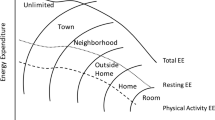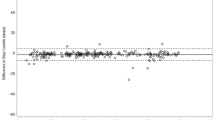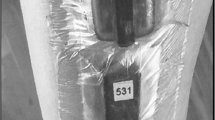Abstract
Motion artefact and signal noise represent challenges when sensor technology is incorporated within clothing. The aim of this study is to assess the effect that device/body coupling has on an accelerometer’s ability to function accurately as a step counter. Data were recorded from 12 subjects (male n = 6) as they walked on a motorised treadmill at speeds of 0.89 m/s and 1.34 m/s. Each subject wore three accelerometers attached directly to the skin. These were located at the sternum, lower back and waist. Three further accelerometers were placed in a harness structure that was worn by the subject. These were located in the same positions as the skin attached accelerometers (sternum, lower back and waist). Increased noise was evident in the signals obtained from accelerometers positioned within the harness. This was evident in an increased peak amplitude and resonance at roughly the same time each heel strike occurred. The signal to noise ratio (SNR) at the waist was significantly lower than that at the sternum (p < 0.001) and lower back (p < 0.001). The method of sensor attachment (skin versus harness) had no significant effect on the accuracy of step count obtained from devices at the sternum (p = 0.962), waist (p = 0.894) or lower back (p = 0.729). This study has shown that accelerometer coupling has no significant effect on step count accuracy. Nevertheless, walking represents only a small part of normal daily physical activity. Further investigation is required to assess the effect of accelerometer /body coupling under free living conditions.









Similar content being viewed by others
References
Atallah L, Lo B, Yang GZ. Can pervasive sensing address current challenges in global healthcare? J Epidemiol Global Health. 2012;2(1):1–13.
World Health Organization. Global recommendations on physical activity for health. World Health Organization; 2010.
Donaldson LJ. At least five a week: evidence on the impact of physical activity and its relationship to health. Department of Health; 2004.
Chief Medical Officers. Stay active: a report on physical activity from the four home countries. Department of Health [Online]. 2011. Available: http://www.dh.gov.uk (Accessed: 18/09/2012).
Craig R, Mindell J, Hirani V. Health survey for England 2008. Volume 1: physical activity and fitness. NHS Information Centre; 2009.
Donnelly P, Bunt A, News J. The Northern Ireland adult sport and physical activity survey. Sport Northern Ireland, Belfast, Tech. Rep. 1, January 2011. 2011.
Bougourd J, McCann J, Stevens K. Design for ageing well: product that is fit for purpose driven by user engagement. In: Proc. The role of inclusive design in making social innovation happen. Royal college of Art London; 2011.
Walker A. New dynamics of ageing programme—cross council research project. University of Sheffield [Online] Available: http://www.newdynamics.group.shef.ac.uk/ (Accessed:20/09/2012).
Dunton GF, Schneider M. Perceived barriers to walking for physical activity. Prev Chronic Dis. 2006;3(4):A116. pp. 1-11.
Bonomi A, Westerterp K. Advances in physical activity monitoring and lifestyle interventions in obesity: a review. Int J Obes. 2011;36(2):167–77.
Bravata DM, Smith-Spangler C, Sundaram V, Gienger AL, Lin N, Lewis R, et al. Using pedometers to increase physical activity and improve health. JAMA. 2007;298:2296–304.
Marshall SJ, Levy SS, Tudor-Locke CE, Kolkhorst FW, Wooten KM, Ji M, et al. Translating physical activity recommendations into a pedometer-based step goal: 3000 steps in 30 minutes. Am J Prev Med. 2009;36:410–5.
Trost SG. State of the art reviews: measurement of physical activity in children and adolescents. Am J Lifestyle Med. 2007;1:299–314.
Chastin SFM, Ferriolli E, Stephens NA, Fearon KCH, Greig C. Relationship between sedentary behaviour, physical activity, muscle quality and body composition in healthy older adults. Age Ageing. 2012;41:111–4.
Tudor-Locke C, Bassett JDR. How many steps/day are enough?: Preliminary pedometer indices for public health. Sports Med. 2004;34:1–8.
Tudor-Locke C, Craig CL, Aoyagi Y, Bell RC, Croteau KA, De Bourdeaudhuij I, et al. How many steps/day are enough? For older adults and special populations. Int J Behav Nutr Phys Act. 2011;8:80–97.
Trost SG, McIver KL, Pate RR. Conducting accelerometer-based activity assessments in field-based research. Med Sci Sports Exerc. 2005;37:S531.
Bouten CVC, Koekkoek KTM, Verduin M, Kodde R, Janssen JD. A triaxial accelerometer and portable data processing unit for the assessment of daily physical activity. IEEE Trans Biomed Eng. 2002;44:136–47.
McAdams ET, Gehin C, Noury N, Ramon C, Nocua R, Massot B, et al. Biomedical sensors for ambient assisted living. Adv Biomed Sens Meas Instrum Syst. 2010:240–262.
Antonsson EK, Mann RW. The frequency content of gait. J Biomech. 1985;18:39–47.
Ohtaki Y, Susumago M, Suzuki A, Sagawa K, Nagatomi R, Inooka H. Automatic classification of ambulatory movements and evaluation of energy consumptions utilizing accelerometers and a barometer. Microsyst Technol. 2005;11:1034–40.
Bouten CVC, Sauren AAHJ, Verduin M, Janssen JD. Effects of placement and orientation of body-fixed accelerometers on the assessment of energy expenditure during walking. Med Biol Eng Comput. 1997;35:50–6.
Cappellini G, Ivanenko YP, Poppele RE, Lacquaniti F. Motor patterns in human walking and running. J Neurophysiol. 2006;95:3426–37.
Sekine M, Tamura T, Fujimoto T, Fukui Y. Classification of walking pattern using acceleration waveform in elderly people. In: Proc. of the 22nd Annual International Conference of the IEEE EMBS; 2000. p. 1356–9
Sekine M, Tamura T, Akay M, Fujimoto T, Togawa T, Fukui Y. Discrimination of walking patterns using wavelet-based fractal analysis. IEEE Trans Neural Syst Rehabil Eng. 2002;10:188–96.
Mathie MJ, Coster ACF, Lovell NH, Celler BG. Accelerometry: providing an integrated, practical method for long-term, ambulatory monitoring of human movement. Physiol Meas. 2004;25:R1–20.
Vermeiren D, Weyn M, Ron G. Detecting human motion: introducing step, fall and ADL algorithms. Lect Notes Inst Comput Sci Soc Inform Telecommun Eng. 2010;27(4):62–9.
Rutherford JJ. Wearable technology. Eng Med Biol Mag IEEE. 2010;29:19–24.
Dunne L. Beyond the second skin: an experimental approach to addressing garment style and fit variables in the design of sensing garments. Int J Fash Des Technol Educ. 2010;3:109–17.
Dunne L. Smart clothing in practice: key design barriers to commercialization. Fash Pract J Des Creat Process Fash Ind. 2010;2:41–66.
Heilman KJ, Porges SW. Accuracy of the LifeShirt®(Vivometrics) in the detection of cardiac rhythms. Biol Psychol. 2007;75:300–5.
Paradiso R, Loriga G, Taccini N, Gemignani A, Ghelarducci B. WEALTHY, a wearable health-care system: new frontier on etextile. J Telecommun Inf Technol. 2005;4:105–13.
Amft O, Habetha J. The myheart project. Book chapter in: smart textiles for medicine and healthcare; 2006. p. 275–97.
Paradiso R, Alonso A, Cianflone D, Milsis A, Vavouras T, Malliopoulos C. Remote health monitoring with wearable non-invasive mobile system: the healthwear project. In: Engineering in medicine and biology society, 2008. 30th Annual International Conference of the IEEE; 2008. p. 1699–702.
Di Rienzo M, Rizzo F, Meriggi P, Castiglioni P, Mazzoleni P, Ferrarin M, et al. MagIC: a textile system for vital signs monitoring. Advancement in design and embedded intelligence for daily life applications. In: Engineering in medicine and biology society, 2007. EMBS 2007. 29th Annual International Conference of the IEEE; 2007. p. 3958–61.
Curone D, Secco EL, Tognetti A, Loriga G, Dudnik G, Risatti M, et al. Smart garments for emergency operators: the ProeTEX project. IEEE Trans Inf Technol Biomed. 2010;14:694–701.
López G, Custodio V, Moreno JI. LOBIN: E-textile and wireless-sensor-network-based platform for healthcare monitoring in future hospital environments. IEEE Trans Inf Technol Biomed. 2010;14:1446–58.
Astaras A, Kokonozi A, Michail E, Filos D, Chouvarda I, Grossenbacher O, et al. Pre-clinical physiological data acquisition and testing of the IMAGE sensing device for exercise guidance and real-time monitoring of cardiovascular disease patients. In: XII Mediterranean Conference on Medical and Biological Engineering and Computing 2010; 2010. p. 240–3.
Kitazaki S, Griffin MJ. A data correction method for surface measurement of vibration on the human body. J Biomech. 1995;28:885–90.
Forner-Cordero A, Mateu-Arce M, Forner-Cordero I, Alcántara E, Moreno J, Pons J. Study of the motion artefacts of skin-mounted inertial sensors under different attachment conditions. Physiol Meas. 2008;29:N21.
Kim W, Voloshin A, Johnson S, Simkin A. Measurement of the impulsive bone motion by skin-mounted accelerometers. J Biomech Eng. 1993;115:47.
Dejnabadi H, Jolles BM, Aminian K. A new approach to accurate measurement of uniaxial joint angles based on a combination of accelerometers and gyroscopes. IEEE Trans Biomed Eng. 2005;52:1478–84.
Van Laerhoven K, Kern N, Gellersen HW, Schiele B. Towards a wearable inertial sensor network. In Eurowearable, 2003. IEE; 2009. p. 125–30.
Cleland I, Nugent C, Finlay D, Armitage R. Optimal placement of accelerometers within the constraints of a smart garment system. In: Information Technology and Applications in Biomedicine (ITAB), 2010 10th IEEE International Conference on; 2010. p. 1–4.
Bohannon RW. Comfortable and maximum walking speed of adults aged 20–79 years: reference values and determinants. Age Ageing. 1997;26:15.
Ying H, Silex C, Schnitzer A, Leonhardt S, Schiek M. Automatic step detection in the accelerometer signal. In: 4th International Workshop on Wearable and Implantable Body Sensor Networks (BSN 2007); 2007. p. 80–5.
Libby R. A simple method for reliable footstep detection in embedded sensor platforms; 2009.
Burns W, Nugent C, McCullagh P, Finlay D, Cleland I, McClean S, et al. A smart garment for older walkers. Impact analysis of solutions for chronic disease prevention and management, p. 258–61; 2012.
Burns W, Nugent C, McCullagh P, Finlay D, Cleland I, McClean S, et al. Evaluation of a technology enabled garment for older walkers. In: Proc. 34th Int. Conference of the IEEE, Engineering in Medicine and Biology Society, EMBC; 2012. p. 85–9.
Acknowledgments
This research was carried out as part of the Design for Aging well project (RES-351-25-0142) and is funded by the ESRC under the UK’s joint research council’s New Dynamics of Ageing Programme.
Author information
Authors and Affiliations
Corresponding author
Rights and permissions
About this article
Cite this article
Cleland, I., Nugent, C.D., Finlay, D.D. et al. Effects of accelerometer coupling on step counting accuracy in healthy older adults. Health Technol. 2, 259–270 (2012). https://doi.org/10.1007/s12553-012-0036-1
Received:
Accepted:
Published:
Issue Date:
DOI: https://doi.org/10.1007/s12553-012-0036-1




